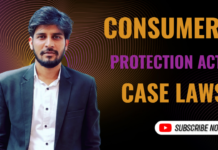Absolute liability and strict liability are legal concepts that refer to situations where a person or entity can be held liable for harm or damage caused, even if they were not negligent or did not intend to cause harm. However, there are some differences between the two concepts.
Absolute liability refers to situations where a person or entity is liable for harm or damage caused, regardless of whether they were at fault or acted negligently. This means that even if the person or entity took all necessary precautions and followed all regulations, they can still be held liable for any harm caused. Absolute liability is typically applied in cases involving hazardous activities, such as the storage and transportation of dangerous goods.
Strict liability, on the other hand, is a more flexible concept that can be applied in a broader range of situations. Under strict liability, a person or entity can be held liable for harm or damage caused, even if they were not at fault or negligent, but only if certain conditions are met. These conditions typically include factors such as the nature of the activity, the degree of risk involved, and the social benefit of the activity. Strict liability is often used in cases involving defective products or hazardous activities, such as the use of dangerous chemicals.
In general, both absolute liability and strict liability are used to protect individuals and society from harm caused by dangerous activities or products. While absolute liability is a more rigid concept that applies in specific circumstances, strict liability is a more flexible concept that can be applied in a broader range of situations.
There have been several notable cases that have established the concept of strict liability in different areas of law. Here are a few examples:
Case Laws related to Strict Liability
- Rylands v. Fletcher (1868): This case is often cited as the foundational case for strict liability in tort law. The case involved a dispute between two landowners, where one had constructed a reservoir on their land that subsequently flooded the other’s land. The court held that the defendant was strictly liable for the damage caused by the flooding, even though they had not been negligent, because they had brought a dangerous substance (water) onto their land and it had escaped and caused harm.
- MacPherson v. Buick Motor Co. (1916): In this case, the court applied the concept of strict liability to product liability, holding that manufacturers have a duty to produce products that are reasonably safe for their intended use, and can be held strictly liable for injuries caused by defects in their products, even if they were not negligent in producing or designing the product.
- Greenman v. Yuba Power Products, Inc. (1963): This California Supreme Court case further developed the doctrine of strict liability in product liability cases. The court held that a manufacturer is strictly liable for injuries caused by a product if the product is defective, regardless of whether the manufacturer was negligent or had breached a warranty.
- State of California v. Superior Court (1974): This case established the principle of strict liability for abnormally dangerous activities. The court held that the state could hold a company strictly liable for any harm caused by the storage of toxic waste, even if the company had taken all necessary precautions to prevent harm, because the activity was inherently dangerous.
These cases and others have established the principle of strict liability in various areas of law, providing a legal framework for holding individuals and companies accountable for harm caused by their actions or products, regardless of their intentions or level of negligence.
Case Laws related to Absolute Liability
Absolute liability is a stricter concept than strict liability, and as such, there are fewer cases that have established it as a legal principle. However, here are a few examples of cases that have applied the concept of absolute liability:
- M.C. Mehta v. Union of India (1987): In this landmark case, the Indian Supreme Court established the principle of absolute liability for hazardous industries. The case involved a gas leak from a chemical plant in Bhopal, which caused widespread death and injury. The court held that the company was strictly and absolutely liable for the harm caused, as hazardous industries are inherently dangerous and can cause massive harm to the public.
- In Re Seabrook Farms (1977): This case involved a food processing company that had been convicted of violating federal food and drug laws by distributing adulterated and misbranded frozen foods. The court held that the company was absolutely liable for the harm caused, as the harm was a result of the company’s actions and not the fault of the injured parties.
- United States v. Park (1975): This case involved the criminal conviction of a truck driver for the transportation of hazardous materials in violation of federal regulations. The court held that the defendant was absolutely liable for the harm caused by transporting the hazardous materials, regardless of whether they had intended to cause harm or had taken necessary precautions.
These cases and others have established the principle of absolute liability in various contexts, providing a legal framework for holding individuals and companies strictly accountable for harm caused by their actions, even if they were not negligent or did not intend to cause harm. However, absolute liability is a relatively rare concept in the law and is typically only applied in situations involving inherently dangerous activities or substances.













